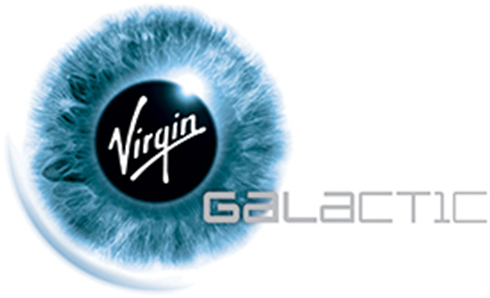Leaderboard
Popular Content
Showing content with the highest reputation on 12/13/2016 in all areas
-
https://careers-virgingalactic.icims.com/jobs/2600/lead-avionics-test-engineer/job Overview: Virgin Galactic www.VirginGalactic.com is on track to become the world’s first privately funded commercial space line. It is dedicated to becoming a world leader in sub-orbital commercial space tourism and small satellite launch services with a longer term vision to develop other space technologies that have the potential to open space to significantly more people and users. If you are looking for a challenging opportunity that will ignite your passion for designing cool and innovative products, are exceptionally creative, are a great problem solver and can make things happen - apply today! Position Summary Virgin Galactic (VG) www.VirginGalactic.com is seeking a Lead Avionics Test Engineer. This position will be responsible for leading a small team of consultants responsible for testing all of the avionics components on LauncherOne. This role is for a hands-on person with great attention to detail and excellent people skills. This is a full-time position at Virgin Galactic’s aerospace facility in Long Beach, California. Responsibilities: Lead a team of consultants, coordinating their workflow, adherence to the process, and reviewing the content and quality of work. Provide engineering expertise in the area of the design, development, verification and operation of test systems to support the production verification of avionics components, and their qualification for our launch vehicles. Lead the development of test systems used to interface with avionics, and to exercise sensors with simulated data on the test bed and in production test. Lead the development of mechanical and electrical configuration of avionics test systems, test benches and associated test equipment. Develop verification plans (including test plans and test procedures) that will support launch vehicle qualification, production test, verification, mission simulation and fault handling needs. Develop software infrastructure for automated production test and simulated mission testing. Qualifications: Basic Qualifications BS in Electrical, Computer, Aerospace or comparable Engineering in a related field 5+ years of experience in test, hardware simulators or system level simulation Proven National Instruments LabVIEW experience (Certified LabVIEW Developer) Proven National Instruments TestStand experience Proven National Instruments PXI Hardware experience 5+ years of design experience with respect to test racks (electrical, mechanical, and pneumatic) Extensive understanding of instrumentation, interfaces and sensors including DMMs, DAQ, Power Supplies, Oscilloscopes, and other lab equipment Working knowledge of communication protocols and instrumentation hardware abstraction layers such as GPIB, Ethernet, RS-232, RS-422, RS-485, UDP, IVI, DAQmx, NI-Switch. Hands-on hardware integration experience including installation of components and harness, and troubleshooting components, harnesses and sensors (including acceleration, pressure, acoustic, strain, position and thermal sensors) Proficiency developing hardware and software test architectures and frameworks for increased efficiency and reliability, experienced with integrated hardware/software system test methodologies Understanding and experience in environmental testing such as vibration, shock, vacuum and thermal. Experience with Source Code Control. Preferred Skills and Experience Extensive proven National Instruments LabVIEW experience (Certified LabVIEW Architect) Experience using Unigraphics NX, CATIA, SolidWorks, Pro-E or any other 3D CAD modelling program. Familiar with wire harness routing design within a 2D or 3D CAD environment Ability to communicate across all levels and disciplines Experience with a defect tracking database Experience with a version control system Physical and/or Additional Requirements ITAR Requirements To conform to U.S. Government space technology export regulations, applicant must be a U.S. citizen, lawful permanent resident of the U.S., protected individual as defined by ITAR (22 CFR §120.15) or eligible to obtain the required authorizations from the U.S. Department of State. Personal Requirements The Virgin Galactic organization has a relaxed and informal culture that encourages individuality and innovation. You will be motivated, enterprising and enthusiastic. Company culture is such that you need to be able to “check your ego at the door,” be a self-starter and possess a sense of humility. You will work well under commercial pressure and thrive on being given challenges and responsibility. You will communicate clearly and be confident and persuasive. You will have a high level of integrity and understand the need of complete confidentiality. Virgin Galactic is an Equal Opportunity Employer; employment with Virgin Galactic is governed on the basis of merit, competence and qualifications and will not be influenced in any manner by race, color, religion, gender, national origin/ethnicity, veteran status, disability status, age, sexual orientation, marital status, mental or physical disability or any other legally protected status.1 point
-
OK, I understand what you're doing better now. I have multiple applications using the same base objects as well. My solution was to have a common subdirectory for the base PPLs from where all the applications are installed. For example, the applications would install in: C:\Program Files\My Company\ and the PPLs are in: C:\Program Files\My Company\Plugins\ The configuration and dynamically loaded files are in the common application directory, so reside under: C:\ProgramData\My Company\ This generally follows Windows application layout. The files that would regularly change (configuration, project-specific plugins) do not require special or elevated permissions, so UAC is not an issue. NI's installer is able to handle this without too much work, so life is good. Looking back, one thing I would probably have done differently is each application would be in a subdirectory and the PPLs in an adjacent "Common" or "Shared" subdirectory.1 point
-
There is a means to dynamically load a PPL, but probably not the way you are using it. I expect you've dropped VIs/classes from the PPL right onto your block diagram. If you are using classes, then you would need to have a parent class built into a PPL that both the application and the dynamically loaded child object use. The parent object gets used throughout the application code and the child object gets loaded at run time. If you are using VIs, then you use it like any other VI with VI server.1 point


